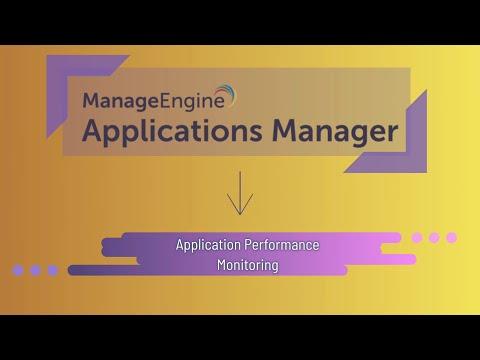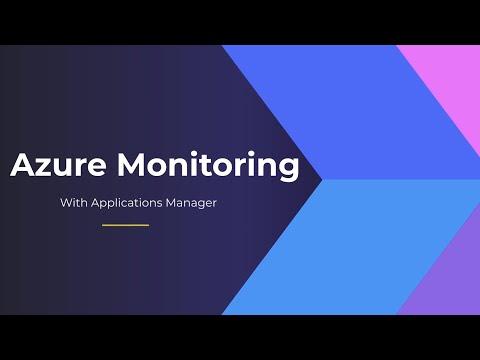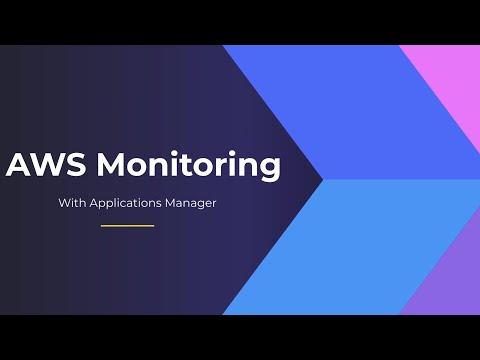According to recent reports, the majority of businesses now use cloud computing in one form or another. Innovation and agility are key to success in today's fast-moving, competitive environment, and with many legacy systems no longer able to keep up with the demands of digital transformation, it's little surprise that more than two thirds of enterprise workloads are now reported to be in the cloud.
As businesses look to capitalize on the benefits offered by the cloud, we've seen the rise of the DevOps practice which, in common with the cloud, offers businesses the advantages of greater agility, speed, quality and efficiency.
However, achieving this agility requires end-to-end visibility based on continuous monitoring of the developed applications as part of the software development life cycle (SDLC) in order to achieve a common situational awareness; without which, DevOps teams can find themselves hindered, causing innovation to stall.
Reaching Maturity
In simple terms, the role of DevOps is to produce new software, based on business needs, at very high speed, and of the highest possible quality of user experience given the constraints under which they operate. A continuous delivery pipeline, for example, could mean as many as several releases a day, each of which requires code to be built, tested, and integrated before being deployed, and each of which must deliver a responsive, reliable service with virtually no downtime.
The functionality of a DevOps team can be impacted by the level of its maturity, however, which can be influenced by two factors. The first of these is the cultural dimension; the team's ability to collaborate effectively, owning the overall DevOps mission as opposed to meeting specific objectives of the individual teams that comprise the whole, such as Operations or QA.
Before mastering this aspect, developers tend to be focused on the speed of software delivery, QA tends to focus on testing predefined use cases, while Operations concentrates on monitoring the production environment. Each team is focused on its own domain and is often siloed off from the others, without utilizing an effective feedback loop and establishing a common situational awareness.
At this stage of organizational maturity, the DevOps team will be focused more on accelerating and optimizing the effectiveness of its individual domains using technologies such as version control management, continuous integration, automated testing, automated deployment and configuration management. Increasing DevOps maturity relies on additional technologies for continuous monitoring, improved visibility, telemetry, feedback loops, and situational awareness. Achieving this, however, can prove challenging.
Visibility and Insights
Consider a situation in which developers build the code for an application, QA tests it based on common use cases, and then the release manager oversees its integration into the mainline and its subsequent deployment. At this point, Operations might find a problem that only manifests at scale, requiring Dev teams to quickly pinpoint the issue and rectify it by developing new code that functions correctly in the product environment.
It's here, then, that visibility is most crucial, providing all parties with common situational awareness. Rather than relying on Ops to highlight issues, in this example Dev teams are able instead to look on the system and see the same situation themselves, and thereby better understand the parameters within which they need to work. Doing so will save time and create more effective feedback loops which would enable to adjust the development and QA processes to detect similar issues early on in the SDLC or even prevent them from occurring altogether.
Achieving this level of visibility requires the use of smart data – metadata based on processing and organizing wire data at the point of collection, and optimizing it for analytics at the highest speed and quality. By analyzing every IP packet that traverses the network during a development cycle and beyond – in real time – smart data delivers meaningful and actionable insights, creating a common situational awareness for all teams. This then enables those teams, from developers through QA to IT Operations, to work together within constantly evolving parameters, avoiding any bottlenecks in the feedback loop.
Opportunity for Innovation
Digital transformation, and the role of the cloud within it, are integral to an organization's innovation. With more applications and services being migrated to the cloud, however, a host of new, unprecedented challenges are emerging.
This is particularly true for DevOps teams, charged with producing quality code at speed. To reach the level of maturity at which they can function most efficiently and effectively requires siloes of work to be broken down across the organization to foster a culture of collaboration and continuous communication. The visibility, insight and common situational awareness offered by smart data can help achieve this, freeing up the potential of DevOps, and affording organizations a greater opportunity for innovation.
The Latest
In the heat of the holiday online shopping rush, retailers face persistent challenges such as increased web traffic or cyber threats that can lead to high-impact outages. With profit margins under high pressure, retailers are prioritizing strategic investments to help drive business value while improving the customer experience ...
In a fast-paced industry where customer service is a priority, the opportunity to use AI to personalize products and services, revolutionize delivery channels, and effectively manage peaks in demand such as Black Friday and Cyber Monday are vast. By leveraging AI to streamline demand forecasting, optimize inventory, personalize customer interactions, and adjust pricing, retailers can have a better handle on these stress points, and deliver a seamless digital experience ...
Broad proliferation of cloud infrastructure combined with continued support for remote workers is driving increased complexity and visibility challenges for network operations teams, according to new research conducted by Dimensional Research and sponsored by Broadcom ...
New research from ServiceNow and ThoughtLab reveals that less than 30% of banks feel their transformation efforts are meeting evolving customer digital needs. Additionally, 52% say they must revamp their strategy to counter competition from outside the sector. Adapting to these challenges isn't just about staying competitive — it's about staying in business ...
Leaders in the financial services sector are bullish on AI, with 95% of business and IT decision makers saying that AI is a top C-Suite priority, and 96% of respondents believing it provides their business a competitive advantage, according to Riverbed's Global AI and Digital Experience Survey ...
SLOs have long been a staple for DevOps teams to monitor the health of their applications and infrastructure ... Now, as digital trends have shifted, more and more teams are looking to adapt this model for the mobile environment. This, however, is not without its challenges ...
Modernizing IT infrastructure has become essential for organizations striving to remain competitive. This modernization extends beyond merely upgrading hardware or software; it involves strategically leveraging new technologies like AI and cloud computing to enhance operational efficiency, increase data accessibility, and improve the end-user experience ...
AI sure grew fast in popularity, but are AI apps any good? ... If companies are going to keep integrating AI applications into their tech stack at the rate they are, then they need to be aware of AI's limitations. More importantly, they need to evolve their testing regiment ...
If you were lucky, you found out about the massive CrowdStrike/Microsoft outage last July by reading about it over coffee. Those less fortunate were awoken hours earlier by frantic calls from work ... Whether you were directly affected or not, there's an important lesson: all organizations should be conducting in-depth reviews of testing and change management ...
In MEAN TIME TO INSIGHT Episode 11, Shamus McGillicuddy, VP of Research, Network Infrastructure and Operations, at EMA discusses Secure Access Service Edge (SASE) ...







